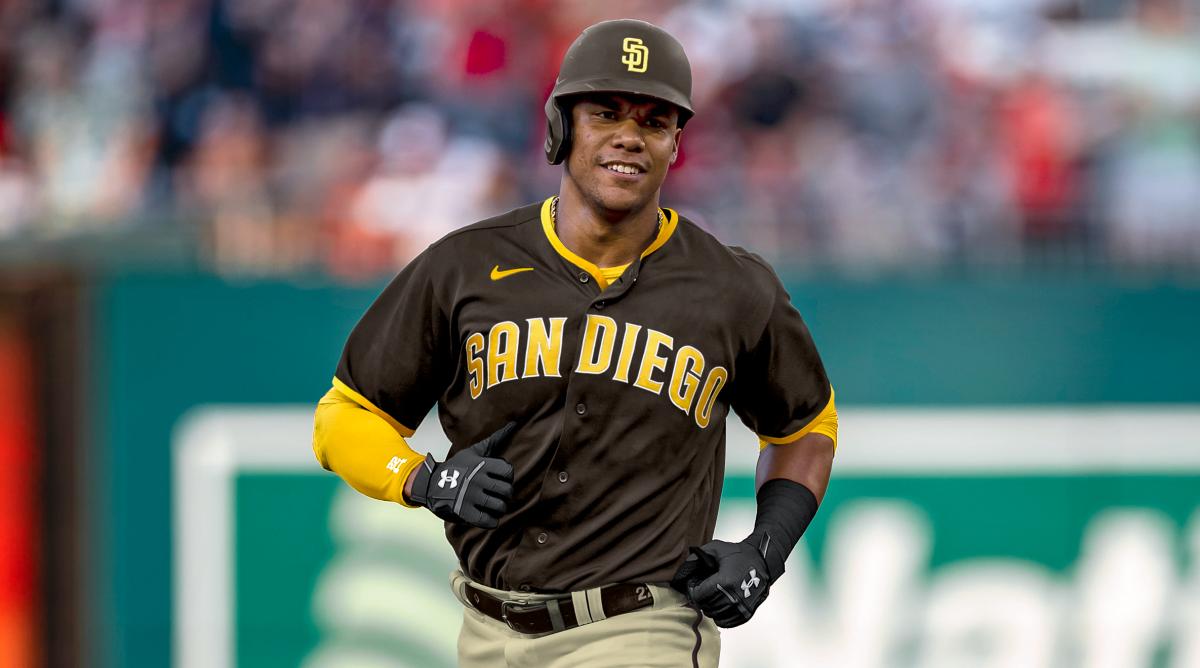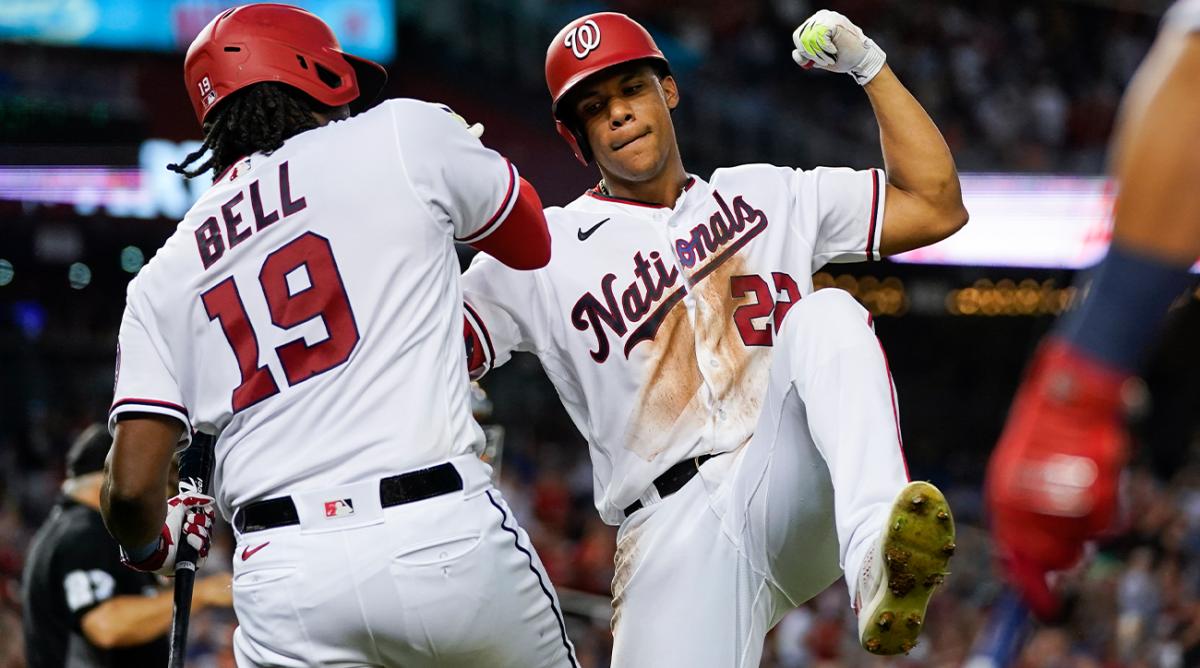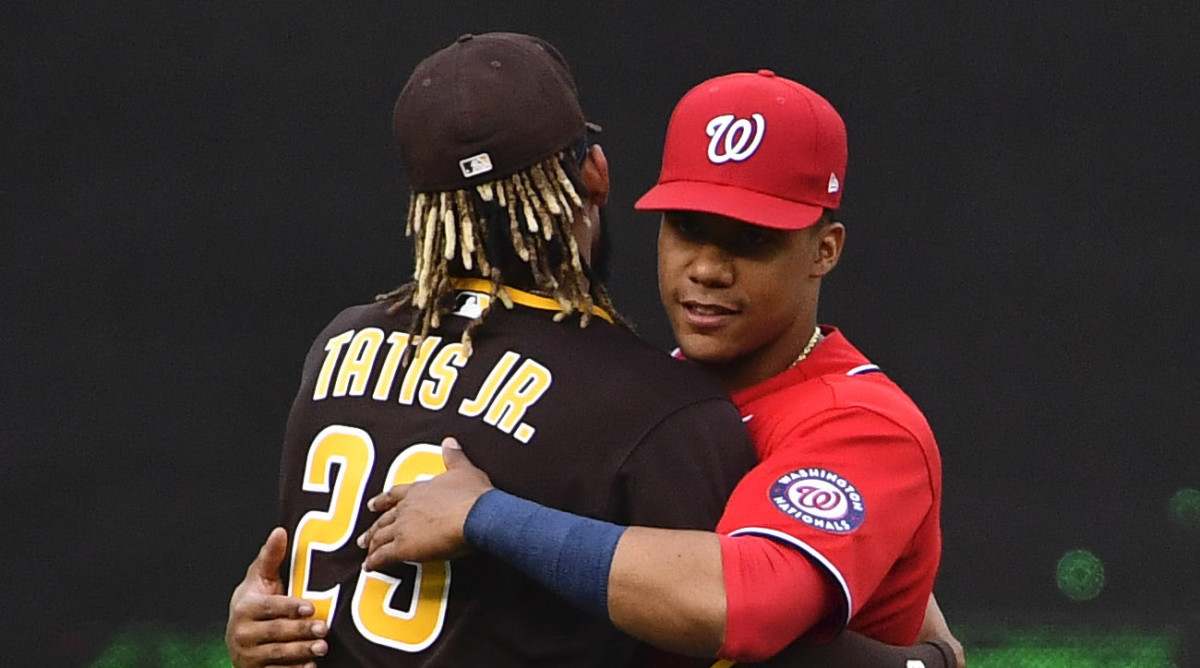The Padres Are the Ideal Team for Baseball Fans
Now, it all seems so obvious. The biggest trade deadline blockbuster in history was destined to wind up with Nationals GM Mike Rizzo having only the Padres to meet his exorbitant price for a player he had to trade, Juan Soto, the most valuable player ever placed on the midseason market. Only the Padres, with its playoff-starved ownership, its riverboat gambler of a GM and the largest U.S. baseball market without an NFL team, could go all in—and then some.

And if you are a true baseball fan, which means you believe possibility is a hope and not a mathematical theorem, you should be thankful for San Diego. The Padres are a team you want to watch. They are a team that operates the way you think you would if you had the money to own a team the way Padres owner Peter Seidler does. The Padres are that buddy you want to travel with for a weekend in Vegas.
The Orioles are the team you want to do your taxes.
This MLB trade deadline market became a sellers’ market. Despite the expanded playoff field that we thought would incentivize more teams compete, you have only 15 teams competing fully for 12 playoff spots.
The trade market is best viewed through the prisms of the Padres and Orioles, two teams chasing a wild card berth, neither of which has won a playoff game in at least eight years or won the World Series in almost two generations. The Padres sold the farm to take a crack at winning. The Orioles ran the data and told their fans they are foolish to believe in what had been a feel-good team running off winning streaks, mounting comeback wins and—or so we thought—defying the odds.
“We have a shot at a wild card now,” Orioles GM Mike Elias said, “but it is not a probability that we are going to win a wild card. We have all different ways of looking at that.”
The 2022 Orioles reached the deadline 52–51 and 2 ½ games out of a playoff spot. They cried “uncle” and traded their best hitter and closer.
The 2021 Braves reached the deadline 51–54 and 5 games out of a playoff spot. They made four trades and won the World Series.
The Padres won the deadline and the hearts of baseball fans by trading for not just Soto, but also Josh Bell, Josh Hader and Brandon Drury while also locking up pitcher Joe Musgrove to a $100 million extension. Rizzo knew he had to trade Soto because the outfielder’s value would never be higher—San Diego gets him for three pennant races, not two—and because the Nationals, with a weak farm system, would not be close to winning before Soto left as a free agent after the 2024 season.

There was no turning back for Rizzo, who rustled up as much interest as he could, knowing he could well wind up with the poor returns that other clubs netted in trading stars such as Johan Santana, Miguel Cabrera, Giancarlo Stanton and Mookie Betts.
He tried the Yankees, but they need to save their resources to keep Aaron Judge while addressing a short-term need for pitching. He tried the Cardinals, but they are a stable, risk-averse organization. John Mozeliak, their president of baseball operations, admitted they would not match the value in the San Diego’s offer.
He tried the Dodgers, who were “tempted,” according to a team source, but they did not have enough of a need to win the bidding and they were partly motivated just to drive up the cost for the Padres, their divisional rival. The Dodgers are keeping some cash and capital reserves for Shohei Ohtani, who likely goes on the trade market this winter when the Angels find out how difficult it is to get the game’s most valuable player to forego free agency after next season and sign an extension. That will happen after Judge sets his average annual value near or above Mike Trout money.
That left the Padres as the only whale in the room. The ownership group led by Ron Fowler and Seidler took over the team in 2012. Two years later they handed the keys to GM A.J. Preller, who in one of his first acts traded the team’s most recent No. 1 pick, Trea Turner. So began a frenetic, if unstable, plan to win. From 2012 to ’19 the Padres fielded a losing team every year with payrolls in the bottom 10 that consistently were at least 20% below the average MLB payroll.
In 2020, Seidler replaced Fowler as the team’s primary shareholder and control person. The team’s payroll skyrocketed. It rose to 11th in ‘20, then eighth in ’21, then fifth in ’22. Last year only the Dodgers and Padres exceeded the luxury tax threshold. With the deadline deals San Diego will blow through it again. They doled out $867 million to Wil Myers, Eric Hosmer, Manny Machado and Fernando Tatis Jr.
It is hard to find a franchise with such a spasm of spending. From 1999 to 2002 the Diamondbacks increased their payroll 50%. It was unsustainable spending (the payroll was slashed 61% in four years), but Arizona did squeeze its only world championship out of the spree.
The Padres are operating with the same playbook: go all in to try to win one World Series, knowing the bill is coming soon.
It’s not just about spending. Preller treats draft picks the way a tween does an allowance. Here is Preller’s history of first-round picks:
Padres First Round Picks Under Preller
Year | Overall Pick | Player | Status | Key Return |
|---|---|---|---|---|
2014 | 13 | Trea Turner | Traded | Wil Myers |
2016 | 8 | Cal Quantrill | Traded | Mike Clevinger |
2016 | 24 | Hudson Potts | Traded | Mitch Moreland |
2016 | 25 | Eric Lauer | Traded | Zach Davies |
2017 | 3 | MacKenzie Gore | Traded | Juan Soto |
2018 | 7 | Ryan Weathers | Triple A | N/A |
2018 | 38 | Xavier Edwards | Traded | Tommy Pham |
2019 | 6 | C.J. Abrams | Traded | Juan Soto |
2020 | 8 | Robert Hassell III | Traded | Juan Soto |
2021 | 27 | Jackson Merrill | Single A | N/A |
That’s the kind of history Rizzo knew he could tap. Rizzo is a scout at heart. He knows talent. He targeted the top of the San Diego farm system and acquired the kind of high-ceiling talent a scout would love upon first sight. Here are the young players Rizzo acquired. There are no Nick Madrigals here:
Name | Age | Height | Weight |
|---|---|---|---|
MacKenzie Gore, LHP | 23 | 6’2” | 197 lbs |
C.J. Abrams, SS | 21 | 6’2” | 185 lbs |
Robert Hassell III, OF | 20 | 6’2” | 195 lbs |
James Wood, OF | 19 | 6’7” | 240 lbs |
Jarlin Susana, RHP | 18 | 6’6” | 235 lbs |
Gore is one of only five left-handed starter who throws a four-seam fastball as hard as 94.7 mph. It has the fourth best rise among lefties. He misses bats. Abrams is another Turner, with more power in the minors at the time of their trades (.910 OPS to .854). Hassell and Wood could be two-thirds of a Washington outfield a few years from now. Susana is a long way from the big leagues, but not in terms of arm strength. This was a haul of high-ceiling players including two (Gore and Abrams) who already have arrived in the majors.
Watch the Padres all season long with fuboTV: Start a free trial today.
What if they become stars? That’s the cost of trying to win once now. It’s the cost of having Tatis (career 160 OPS+), Soto (160) and Machado (124) bat back-to-back-back, as star-studded a trio as exists in the game.

With all this star power, and with the Chargers long gone from town, the Padres are likely to break the franchise’s per-game attendance record, set in 2004 when Petco Park opened.
Getting Soto does not come with a guarantee. As it stands today, the Padres would have to face the Braves in a three-game wild card series, all in Atlanta. (San Diego won two out of three there this year.) If the Padres survive that they would have to take on a rested Mets team with Max Scherzer and Jacob deGrom.
But that’s getting too far ahead, though not quite as far ahead as guessing what becomes of the five young prospects Preller traded. No matter how the story ends or what bills come due, this week the Padres let it be known they are all in. And those roars you will hear rising from Petco Park are proof not just of a moment or a rally, but of a commitment to try and to entertain.
